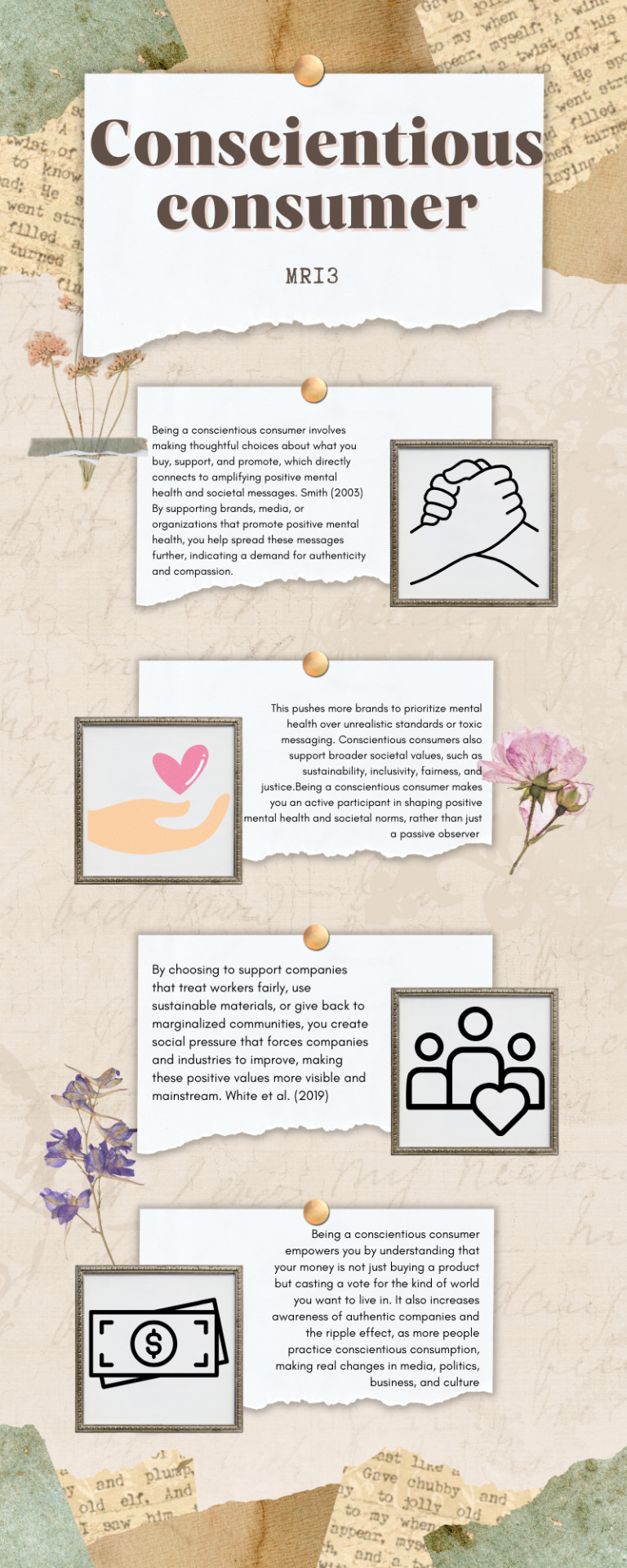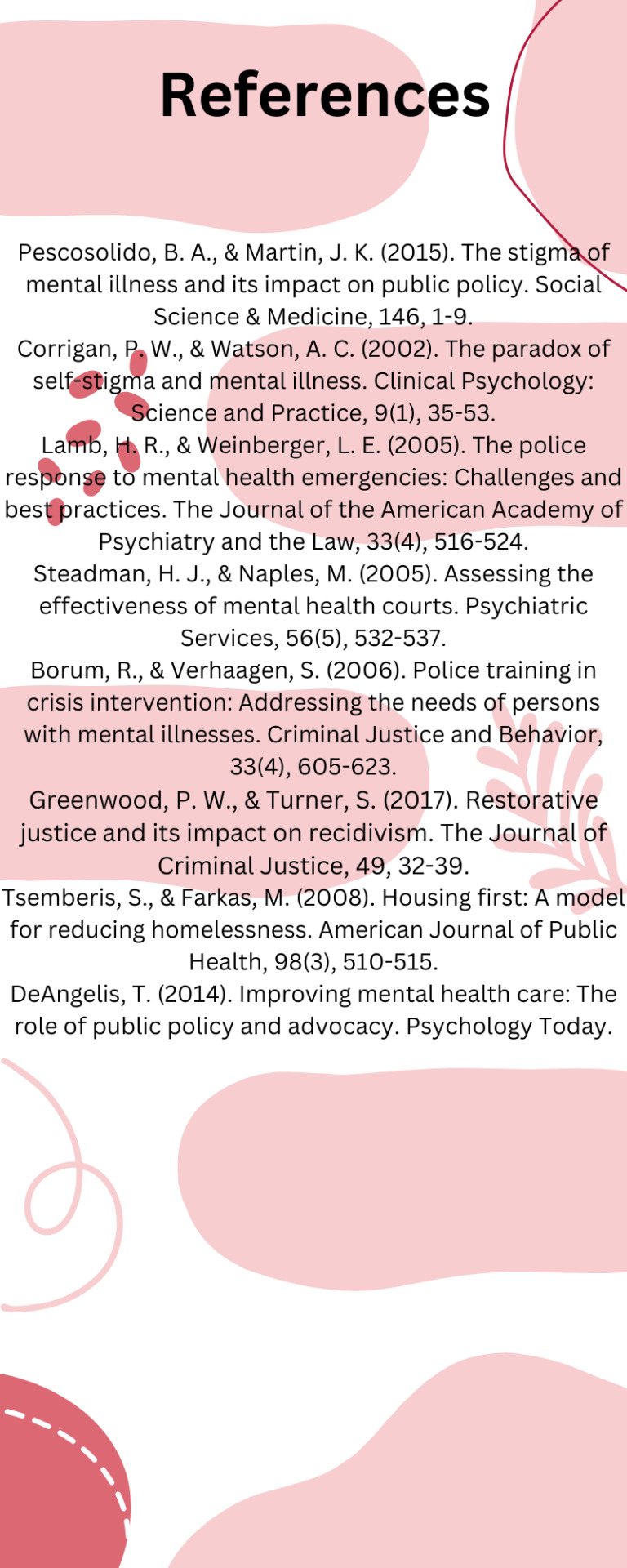Text

References
Lowder, E. M., Desmarais, S. L., & Baucom, D. J. (2018). Evaluating the effectiveness of a large-scale mental health court: Retention, treatment, and recidivism. Law and Human Behavior, 42(1), 27–38. https://doi.org/10.1037/lhb0000275
Prins, S. J. (2014). Prevalence of mental illnesses in U.S. state prisons: A systematic review. Psychiatric Services, 65(7), 862–872. https://doi.org/10.1176/appi.ps.201300166
Substance Abuse and Mental Health Services Administration. (2014). SAMHSA’s concept of trauma and guidance for a trauma-informed approach (HHS Publication No. SMA14-4884). https://ncsacw.samhsa.gov/userfiles/files/SAMHSA_Trauma.pdf
Torrey, E. F., Zdanowicz, M. T., Kennard, A. D., Lamb, R., Eslinger, D., Biasotti, M., & Fuller, D. A. (2014). The treatment of persons with mental illness in prisons and jails: A state survey. Treatment Advocacy Center. https://www.treatmentadvocacycenter.org
5 notes
·
View notes
Text

References
Roth, M. (2020). Suicide in law enforcement: Understanding prevention and intervention strategies. Journal of Law Enforcement Leadership and Ethics, 7(2), 1–15.
Substance Abuse and Mental Health Services Administration. (2018). First responders: Behavioral health concerns, emergency response, and trauma. U.S. Department of Health and Human Services. https://www.samhsa.gov/sites/default/files/dtac/supplementalresearchbulletin-firstresponders-may2018.pdf
6 notes
·
View notes
Text

References
American Psychological Association. (2022). Mental health and well-being in the workplace. https://www.apa.org/topics/mental-health/workplace
Carrington, M. J., Neville, B. A., & Whitwell, G. J. (2014). Lost in translation: Exploring the ethical consumer intention–behavior gap. Journal of Business Research, 67(1), 2759–2767. https://doi.org/10.1016/j.jbusres.2012.09.022
Smith, N. C. (2003). Corporate social responsibility: Whether or how? California Management Review, 45(4), 52–76. https://doi.org/10.2307/41166188
White, K., Habib, R., & Hardisty, D. J. (2019). How to SHIFT consumer behaviors to be more sustainable: A literature review and guiding framework. Journal of Marketing, 83(3), 22–49. https://doi.org/10.1177/0022242919825649
5 notes
·
View notes
Text

References
Alexander, M. (2010). The new Jim Crow: Mass incarceration in the age of colorblindness. The New Press.
Chung, J. (2020). Felony Disenfranchisement: A Primer. The Sentencing Project. https://www.sentencingproject.org/publications/felony-disenfranchisement-a-primer/
Manza, J., & Uggen, C. (2006). Locked Out: Felon Disenfranchisement and American Democracy. Oxford University Press.
Uggen, C., Manza, J., & Behrens, A. (2004). "Less than the average citizen": Stigma, role transition and the civic reintegration of convicted felons. In S. Maruna & R. Immarigeon (Eds.), After Crime and Punishment: Pathways to Offender Reintegration (pp. 258–290). Willan Publishing.
4 notes
·
View notes
Text

References
Cloud, D. H., Parsons, J., & Delany-Brumsey, A. (2014). Addressing mass incarceration: A clarion call for public health. American Journal of Public Health, 104(3), 389–391. https://doi.org/10.2105/AJPH.2013.301741
Dowler, K. (2003). Media consumption and public attitudes toward crime and justice: The relationship between fear of crime, punitive attitudes, and perceived police effectiveness. Journal of Criminal Justice and Popular Culture, 10(2), 109–126.
Greer, C., & Reiner, R. (2012). Mediated mayhem: Media, crime, criminal justice. In M. Maguire, R. Morgan, & R. Reiner (Eds.), The Oxford handbook of criminology (5th ed., pp. 245–278). Oxford University Press.
Haney, C. (2017). Reforming punishment: Psychological limits to the pains of imprisonment. American Psychological Association.
Schnittker, J., & John, A. (2007). Enduring stigma: The long-term effects of incarceration on health. Journal of Health and Social Behavior, 48(2), 115–130.
Thompson, A., & Coté, D. (2015). Media and the mentally ill: The impact of representations on perceptions. Canadian Journal of Psychiatry, 60(3), 130–135.
2 notes
·
View notes
Text

References
Council of State Governments Justice Center. (2012). Improving responses to people with mental illnesses: The essential elements of a mental health court.
Redlich, A. D. (2005). Voluntary, but knowing and intelligent? Comprehension in mental health courts. Psychology, Public Policy, and Law, 11(4), 605–622. https://doi.org/10.1037/1076-8971.11.4.605
Skeem, J. L., Manchak, S., & Peterson, J. K. (2011). Correctional policy for offenders with mental illness: Creating a new paradigm for recidivism reduction. Law and Human Behavior, 35(2), 110–126. https://doi.org/10.1007/s10979-010-9223-7
Watson, A. C., Hanrahan, P., Luchins, D. J., & Lurigio, A. J. (2001). Mental health courts and the complex issue of mentally ill offenders. Psychiatric Services, 52(4), 477–481. https://doi.org/10.1176/appi.ps.52.4.477
0 notes
Text

References:
Bronson, J., & Berzofsky, M. (2017). Indicators of mental health problems reported by prisoners and jail inmates, 2011-12. Bureau of Justice Statistics. https://bjs.ojp.gov
National Alliance on Mental Illness. (2022). Jailing people with mental illness. https://www.nami.org
Pew Charitable Trusts. (2020). How public health and public safety can work together to stop cycles of crisis. https://www.pewtrusts.org
Substance Abuse and Mental Health Services Administration. (2021). Expanding access to mental health and substance use treatment. https://www.samhsa.gov
Torrey, E. F., Kennard, A. D., Eslinger, D., Lamb, R., & Pavle, J. (2017). More mentally ill persons are in jails and prisons than hospitals: A survey of the states. Treatment Advocacy Center. https://www.treatmentadvocacycenter.org
6 notes
·
View notes
Text

References
Greenberg, N., Docherty, M., Gnanapragasam, S., & Wessely, S. (2020). Managing mental health challenges faced by healthcare workers during COVID-19 pandemic. BMJ, 368, m1211. https://doi.org/10.1136/bmj.m1211
Moreno, C., Wykes, T., Galderisi, S., Nordentoft, M., Crossley, N., Jones, N., ... & Arango, C. (2020). How mental health care should change as a consequence of the COVID-19 pandemic. The Lancet Psychiatry, 7(9), 813-824. https://doi.org/10.1016/S2215-0366(20)30307-2
Wind, T. R., Rijkeboer, M., Andersson, G., & Riper, H. (2020). The COVID-19 pandemic: The ‘black swan’ for mental health care and a turning point for e-health. Internet Interventions, 20, 100317. https://doi.org/10.1016/j.invent.2020.100317
3 notes
·
View notes
Text


Mindful Reading 6
5 notes
·
View notes
Text


MR5
Transparency in mental health
2 notes
·
View notes
Text


Mindful Response 4
NEW WEEK = NEW LEARNING
Enjoy the mindful response over celebrity impact!!
8 notes
·
View notes
Text


Mindful Response 3
What did you guys think of this weeks reading? I know I am a little ahead, but I thought it was interesting to learn about the DSM revolution because I have never heard of such a thing previously.
Thank you for taking the time to look over my post! Have a beautiful day!
9 notes
·
View notes
Text


Mindful response 2!!
This topic was a little more complicated to read and learn about. Any kind of trauma is a hard thing to experience and read about. Just know you are not alone! There are people and resources to help get you through to the next day:)
Fellow friends, how did you feel about the mindful response and reading? Was it easy or hard for you individually to read? Was there anything new you learned? Any new perspectives in life and in importance of mental health? Let me know!
Have a great day sunshines:)
8 notes
·
View notes
Text


Mental Health and criminal justice mindful response week 1!!
To all my friends, what do you think about the reading this week? What was your biggest takeaway and most memorable portion of the reading? Is there anything you did not like about the reading for this week? Let me know!!
6 notes
·
View notes

